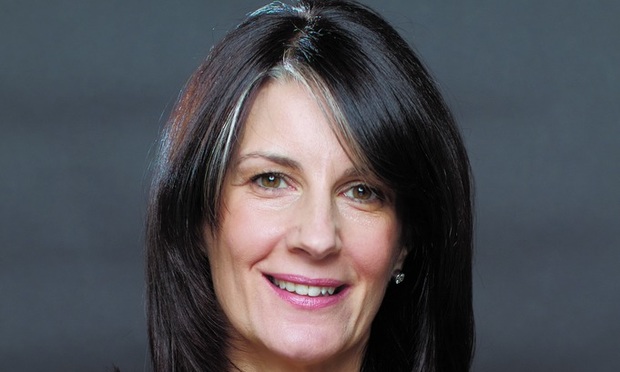Four Takeaways for Communications in a Crisis
First of all, how are you? I hope you're all healthy, safe and managing as best you can as we head into the second half of 2020. In the weeks…
June 30, 2020 at 12:05 PM
6 minute read
 Meg Pritchard.
Meg Pritchard.
First of all, how are you? I hope you're all healthy, safe and managing as best you can as we head into the second half of 2020.
In the weeks after the COVID-19 pandemic hit, we were flooded with marketing messages— from social media and digital advertising, to television and print ads. My inbox, like yours, was flooded with emails from every company I'd ever done business with—and many I hadn't. Every organization I'd ever given my email to—voluntarily or otherwise—seemed to be reaching out to connect with me.
Some notable standouts aside, most of the content repeated the same message over and over and over again, until it became an indistinguishable cacophony of content. The messages of "we care about our clients and customers," more often than not followed by a low-key (or not-so-low-key) sales pitch, came off as hollow at best in the face of the devastating health and economic effects of the virus. Some of the messaging was flagrantly opportunistic, as a number of organizations treated the global pandemic as a marketing opportunity.
The scenario was repeated after the heinous killing of George Floyd by Minneapolis police last month sparked national and international protests and calls for criminal justice and policing reform. Organizations of all kinds jumped on the #BlackLivesMatter bandwagon and issued corporate statements denouncing racism in messaging across digital and traditional platforms. Again, with some very notable exceptions, the backlash has been fierce as brand after brand has been called out for its performative allyship and opportunistic messaging.
Of course, professional services marketing isn't fully aligned with consumer marketing, but many of the broader communications and content takeaways are applicable.
Use Your Platforms Authentically and Appropriately
This is not the time for "business as usual." When your clients and communities are in crisis—whether that's dealing with the impact of COVID-19 or confronting the need to eradicate systemic racism—you need to pause and decide how you want to communicate in direct response to the situation. This means evaluating how your usual messaging might land and also what other communications your clients and communities are looking to you to provide.
Figuring this out requires both an external and an internal check. Ask yourself two questions:
First, what do people need right now? If you listen to your clients, communities and constituencies, they will tell you what kind of communications and content they are looking for the most. What are clients calling about? What's being talked about in the industries and market sectors you serve? If you know your clients (as you should), you probably already have a good idea about the challenges they're confronting, but current events may have shifted the landscape, so it's essential to listen and ask questions.
What's appropriate for my practice (or firm) right now? To be clear (again) this is not about turning a crisis into a marketing opportunity. Instead, it's about using your expertise and the role you play in your clients' lives—business and personal—to be of service.
It's also not about jumping on the bandwagon and emulating what others are doing. So many firms ran for the COVID-19 ball at the beginning of the pandemic, but what resulted was a scrum of content that missed the mark with clients, according to reporting by Corporate Counsel and The American Lawyer, among others. Too general, too lengthy and too frequent were among the criticisms of the content that law firms put out at the beginning of the pandemic, as well as generic and stale. A lot of firms put COVID-19 content on blast without much thought as to what their specific clients wanted or needed in the moment.
Take Care With Social Media
Social media deserve special mention because unlike your website, blog or email channels, which you fully control, social media is a public forum. You can control your own messaging but not others' responses. Be careful of jumping on social media bandwagons. As a number of organizations found out when they posted their "support" for Black Lives Matter and the protests in the wake of George Floyd's killing, this can look opportunistic—and it can backfire spectacularly. Inauthentic or poorly thought-out posts can quickly earn you a lot of negative visibility. And deploy hashtags with care. More than a few companies have needed to apologize for including a trending hashtag in social media without fully understanding what it meant.
Be Prepared to Pivot
As time passes, both you and your clients will be operating in a changed—and changing— environment, and your communications will need to evolve to reflect new conditions, whether temporary or permanent.
During the first part of the COVID-19 pandemic, much of content firms put out highlighted government responses to the spread of the virus and the impact on individuals, businesses, industries and market sectors. That was rapidly followed by information on efforts to dampen the adverse economic consequences of shut-down and stay-at-home orders. The predominant form of this content was written—email alerts and COVID-19 newsletters, dedicated website "resource" pages and blogs—in part because large events and in-person thought leadership opportunities were off the table and remote substitutes like webinars and podcasts required time and technology that law firms may not have had the ability to deploy, especially as they dealt with moving entire offices to work from home arrangements.
Now, several months into the COVID-19 crisis (or any crisis), clients are looking beyond their initial response for future-focused information and guidance. And firms may now have more options available for delivering needed information in a usable and accessible way. And while it's not back to "business as usual," it also doesn't have to be "all COVID, all the time," as it was back in March and April, as clients are looking for more variety in topics of interest.
Clients Are People Too
Regardless of whether your clients are Fortune 100 companies, small startups, family offices or individuals, legal services is an industry based on one-to-one relationships. In times of crises, people are looking to be viewed as, well, people, not just as sources of revenue for you and your firm. So, while you want to provide the legal, business and practical resources that clients are looking for, consider communications that acknowledge and address the human needs of the people who receive them. Empathy, understanding and even a little bit of humor (a little goes a long way here!)—authentically expressed—are both welcome and appropriate.
Meg Pritchard, the principal of CREATE: Communications—Media—Marketing, is a lawyer, writer and marketing professional who works with law firms and lawyers to develop compelling content for their marketing and business development. She can be reached at [email protected] or 215-514-3206.
This content has been archived. It is available through our partners, LexisNexis® and Bloomberg Law.
To view this content, please continue to their sites.
Not a Lexis Subscriber?
Subscribe Now
Not a Bloomberg Law Subscriber?
Subscribe Now
NOT FOR REPRINT
© 2025 ALM Global, LLC, All Rights Reserved. Request academic re-use from www.copyright.com. All other uses, submit a request to [email protected]. For more information visit Asset & Logo Licensing.
You Might Like
View All

Energy Lawyers Field Client Questions as Trump Issues Executive Orders on Industry Funding, Oversight
6 minute read
Trending Stories
- 1Corporate Litigator Joins BakerHostetler From Fish & Richardson
- 2E-Discovery Provider Casepoint Merges With Government Software Company OPEXUS
- 3How I Made Partner: 'Focus on Being the Best Advocate for Clients,' Says Lauren Reichardt of Cooley
- 4People in the News—Jan. 27, 2025—Barley Snyder
- 5UK Firm Womble Bond to Roll Out AI Tool Across Whole Firm
Who Got The Work
J. Brugh Lower of Gibbons has entered an appearance for industrial equipment supplier Devco Corporation in a pending trademark infringement lawsuit. The suit, accusing the defendant of selling knock-off Graco products, was filed Dec. 18 in New Jersey District Court by Rivkin Radler on behalf of Graco Inc. and Graco Minnesota. The case, assigned to U.S. District Judge Zahid N. Quraishi, is 3:24-cv-11294, Graco Inc. et al v. Devco Corporation.
Who Got The Work
Rebecca Maller-Stein and Kent A. Yalowitz of Arnold & Porter Kaye Scholer have entered their appearances for Hanaco Venture Capital and its executives, Lior Prosor and David Frankel, in a pending securities lawsuit. The action, filed on Dec. 24 in New York Southern District Court by Zell, Aron & Co. on behalf of Goldeneye Advisors, accuses the defendants of negligently and fraudulently managing the plaintiff's $1 million investment. The case, assigned to U.S. District Judge Vernon S. Broderick, is 1:24-cv-09918, Goldeneye Advisors, LLC v. Hanaco Venture Capital, Ltd. et al.
Who Got The Work
Attorneys from A&O Shearman has stepped in as defense counsel for Toronto-Dominion Bank and other defendants in a pending securities class action. The suit, filed Dec. 11 in New York Southern District Court by Bleichmar Fonti & Auld, accuses the defendants of concealing the bank's 'pervasive' deficiencies in regards to its compliance with the Bank Secrecy Act and the quality of its anti-money laundering controls. The case, assigned to U.S. District Judge Arun Subramanian, is 1:24-cv-09445, Gonzalez v. The Toronto-Dominion Bank et al.
Who Got The Work
Crown Castle International, a Pennsylvania company providing shared communications infrastructure, has turned to Luke D. Wolf of Gordon Rees Scully Mansukhani to fend off a pending breach-of-contract lawsuit. The court action, filed Nov. 25 in Michigan Eastern District Court by Hooper Hathaway PC on behalf of The Town Residences LLC, accuses Crown Castle of failing to transfer approximately $30,000 in utility payments from T-Mobile in breach of a roof-top lease and assignment agreement. The case, assigned to U.S. District Judge Susan K. Declercq, is 2:24-cv-13131, The Town Residences LLC v. T-Mobile US, Inc. et al.
Who Got The Work
Wilfred P. Coronato and Daniel M. Schwartz of McCarter & English have stepped in as defense counsel to Electrolux Home Products Inc. in a pending product liability lawsuit. The court action, filed Nov. 26 in New York Eastern District Court by Poulos Lopiccolo PC and Nagel Rice LLP on behalf of David Stern, alleges that the defendant's refrigerators’ drawers and shelving repeatedly break and fall apart within months after purchase. The case, assigned to U.S. District Judge Joan M. Azrack, is 2:24-cv-08204, Stern v. Electrolux Home Products, Inc.
Featured Firms
Law Offices of Gary Martin Hays & Associates, P.C.
(470) 294-1674
Law Offices of Mark E. Salomone
(857) 444-6468
Smith & Hassler
(713) 739-1250






